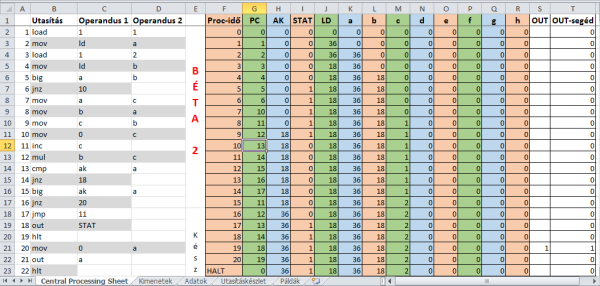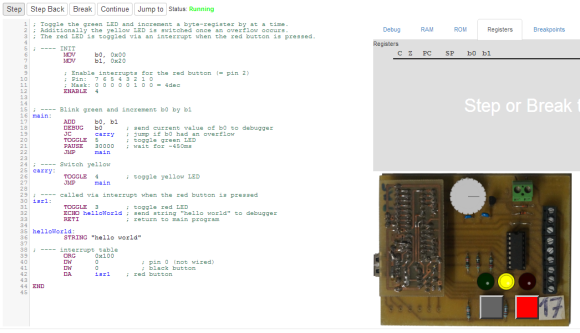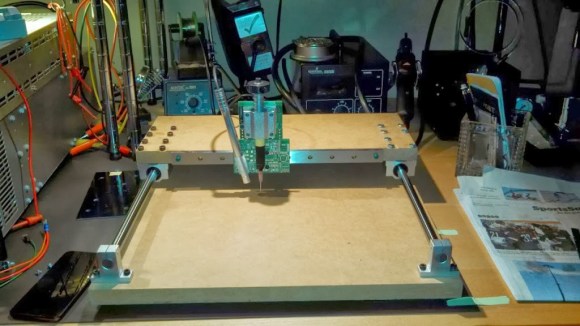[Ádám] participates in a competition called KöMaL. It’s a 9-times-a-month journal for junior high and high school students featuring math and physics problems. [Paul Erdős], one of the most published mathematicians of all time, was a huge participant and by far the most notable student to crack open a copy of KöMaL in its hundred-year history. [Ádám] was trying his hand at a problem in Excel, but the official rules prohibit the use of Excel macros. In a daze, he came up with one of the most clever uses of Excel: building an assembly interpreter with the most popular spreadsheet program.
This is a virtual Harvard architecture machine without writable RAM; the stack is only lots and lots of IFs. The instructions – mostly load, MOV, JNZ, INC, and CMP solves this problem, examining two inputs to see if they multiples of each other. If you’re wondering, an example cell from [Ádám]’s Excel sheet looks like this:
=F6
INDEX($C$2:$C99999,$G2,1),
IF(AND(INDEX($B$2:$B99999,$G2,1)="JZ",$I2=0),
INDEX($C$2:$C99999,$G2,1),
IF(AND(INDEX($B$2:$B99999,$G2,1)="JNZ",$I2<>0),
INDEX($C$2:$C99999,$G2,1),
G2+1
)
)
)
)
[Ádám] has provided his Excel solution to the problem, available on the hackaday.io. It’s in Hungarian which really shouldn’t matter since it’s basically Excel and a pseudo-x86 instruction set. but the column labels will require a bit of Google Translate.


 While the most common use for a Raspberry Pi is probably a media center PC or retro game emulator, the Pi was designed as an educational computer meant to be an easy-to-use system in the hands of millions of students. Team 28 at Imperial College London certainly living up to the Raspberry Pi Foundation’s expectations
While the most common use for a Raspberry Pi is probably a media center PC or retro game emulator, the Pi was designed as an educational computer meant to be an easy-to-use system in the hands of millions of students. Team 28 at Imperial College London certainly living up to the Raspberry Pi Foundation’s expectations 
 Very few people know assembly. [Luto] seeks to make learning assembly just a little bit easier with his “fully functional
Very few people know assembly. [Luto] seeks to make learning assembly just a little bit easier with his “fully functional  Populating a large surface mount PCB can take forever. [craftycoder] from Freeside Atlanta has built a great looking
Populating a large surface mount PCB can take forever. [craftycoder] from Freeside Atlanta has built a great looking 
 If [Will Baden] is in the running for Father of the Year, he’s a shoe-in. His son requested a robot-themed birthday party, so [Will] did what any superhero father would do and
If [Will Baden] is in the running for Father of the Year, he’s a shoe-in. His son requested a robot-themed birthday party, so [Will] did what any superhero father would do and 








